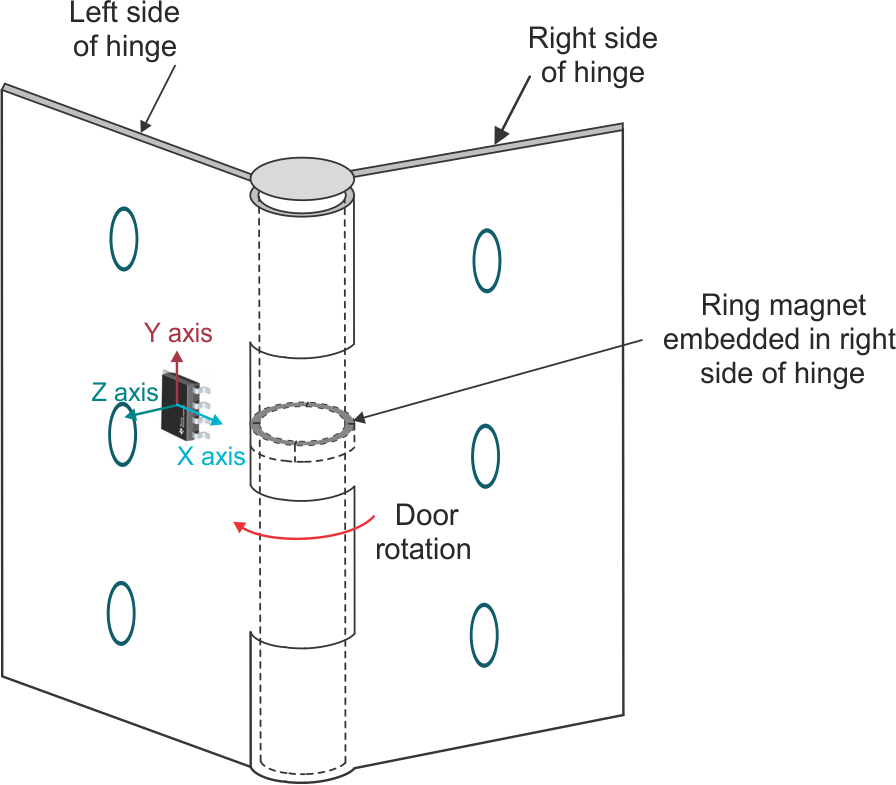SBAA530 September 2021 TMAG5170 , TMAG5170-Q1 , TMAG5173-Q1
2 Optimizing Power Consumption
Ensuring sufficient measurement accuracy and speed while consuming as little power as possible is also important for systems that monitor movement or position. This is essential for battery-powered or low-power systems, where the power consumption of the magnetic sensor could use a significant portion of a system’s total power. One example of this is a remote monitor for a factory floor that communicates with a programmable logic controller through a 4- to 20-mA loop.
Other battery- or low-powered application examples are door and window sensors used in building or home security systems. A door sensor with angle detection can detect an open-and-close event and measure how far the door has opened. It is possible to implement this capability with a ring magnet and a linear 3D Hall-effect position sensor embedded in a traditional door hinge (see Figure 2-1). For low-power applications, linear 3D Hall-effect position sensors should be placed in a low-power duty-cycle mode running at low frequencies of 5 Hz or less.

Figure 2-1 Example of Angle Detection in a Traditional Door-Hinge Application
An added benefit to using a linear 3D Hall-effect position sensor in this application is that only two axes of sensitivity monitor the angle, enabling the use of the third axis for detecting malicious magnetic tampering or disabling, such as placing a magnet over the sensor to trick the system into believing that the door is still closed.
The TMAG5170 offers various power options (see Table 2-1) to optimize system power consumption. Depending on application needs, the sensor can be set to full active conversion, standby, duty cycle, sleep or deep sleep.
| Power Modes | Operation |
|---|---|
| Active conversation | Produces a continuous stream of data. Used when fully analyzing or processing magnetic fields. Typical current consumption is in the low, single-digit mA range. |
| Standby | Device is in a low-power state and will start a measurement upon a prompt by the MCU. Current consumption is < 1 mA. |
| Duty cycle | The device is placed in a sleep mode and wakes up at specified intervals to take measurements. Current consumption is 1.3 µA at 1 Hz. |
| Sleep | Similar to duty-cycle mode, except that the device is waiting for an MCU prompt to take a measurement, rather than doing so on its own. |
| Deep sleep | The device is essentially powered down, consuming 5 nA of current. |